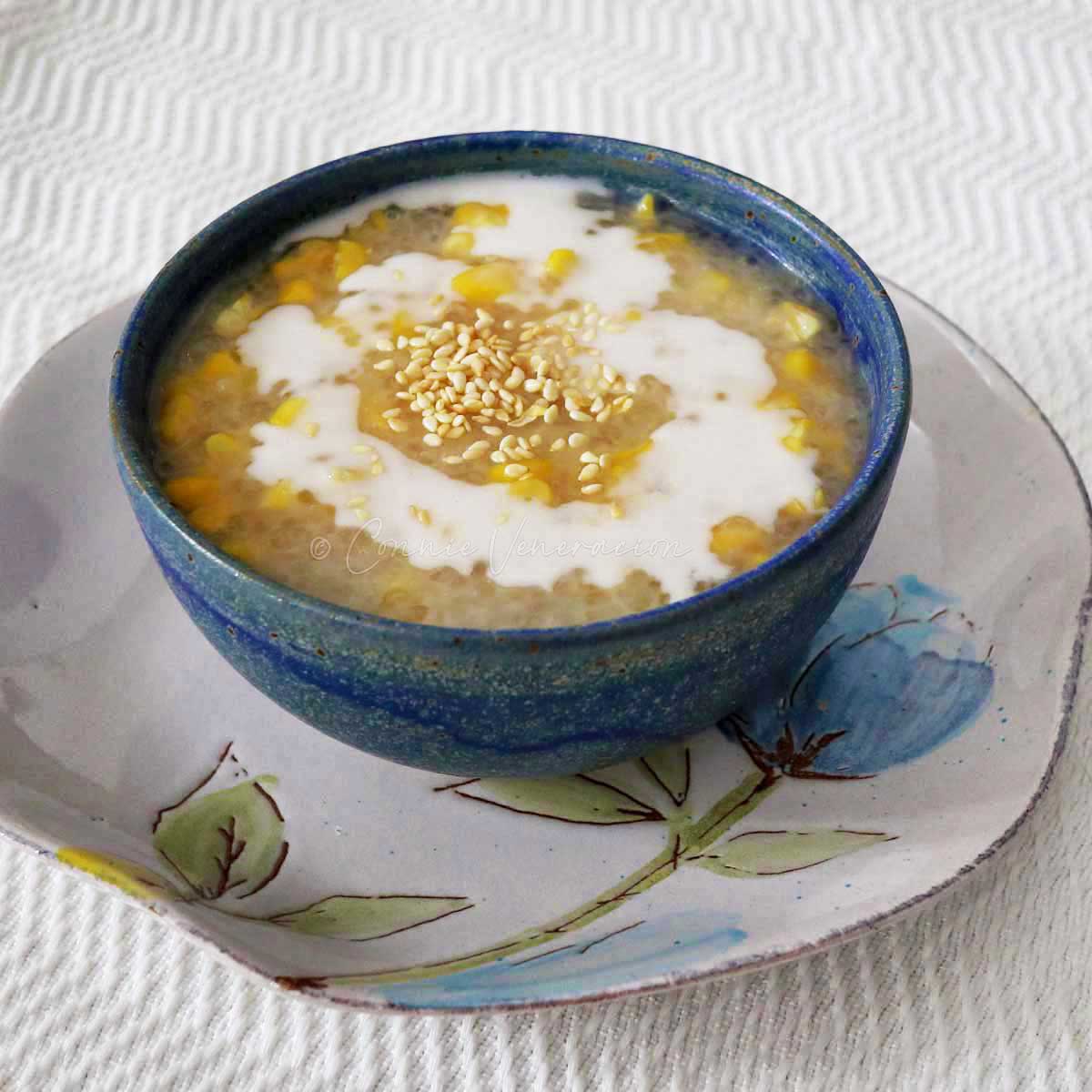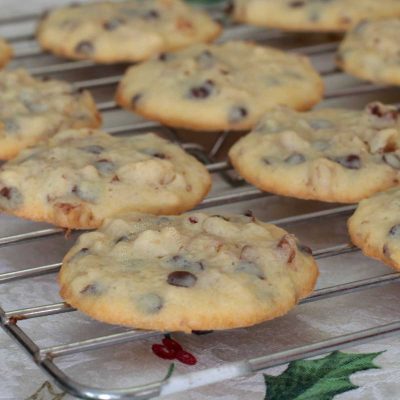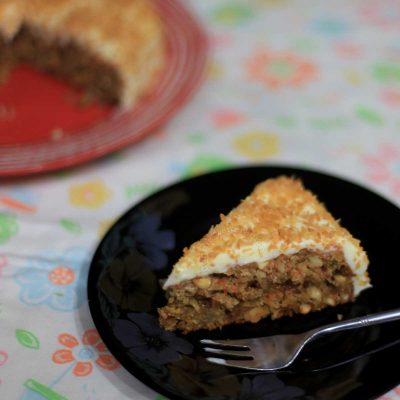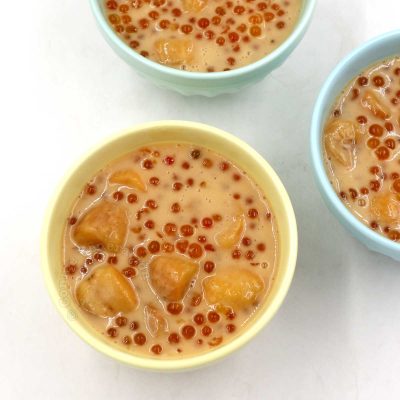Che is a generic term for a wide array of Vietnamese sweets which can range from soupy to almost dry. Che can have beans, peas, fruits, jelly, root crops or glutinous rice. Che bap has corn and tapioca pearls or, occasionally, rice. Unlike Western pudding, che bap isn’t firm but, rather, has a consistency that’s similar to thick porridge.
How is che bap eaten? Here’s one thing I learned in Vietnam. If you order che bap in a restaurant that caters mostly to Western tourists, it will likely be listed as a dessert. But out on the streets where it is sold as street food, che bap is a sweet snack.

To make che bap, you’ll need sweet corn, pandan leaf, tapioca, sugar, salt, coconut milk and coconut cream. There are recipes that use tapioca powder dispersed in water to thicken che bap. While that will yield a thick che bap, I prefer the contrast in texture between the corn kernels and tapioca pearls. I used quick-cooking tapioca pearls.
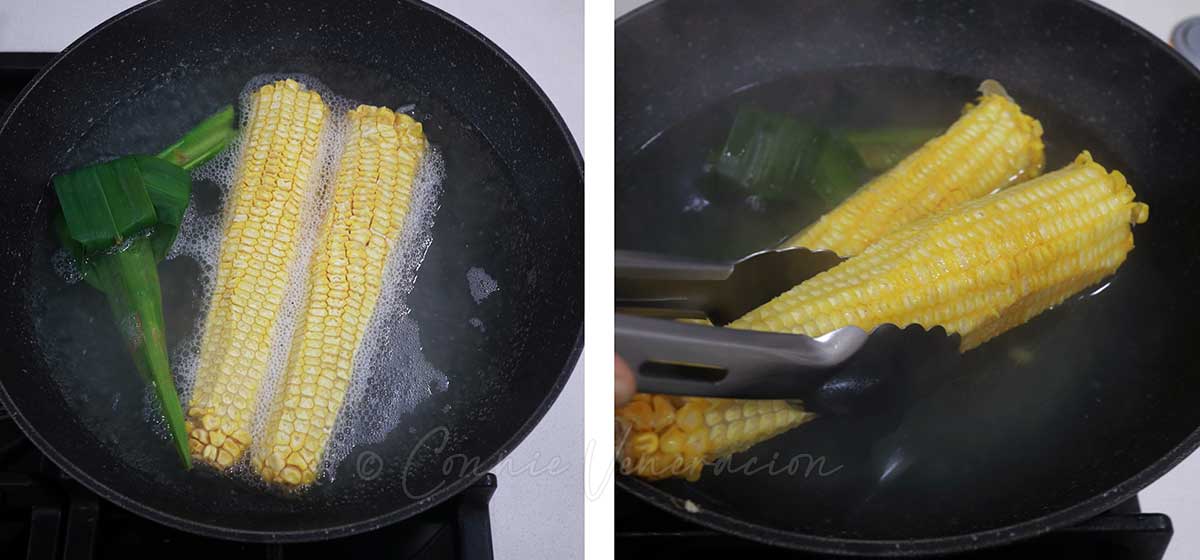
To make a flavorful and aromatic cooking liquid, the corn cobs and pandan leaf are boiled in water for about ten minutes. The corn cobs and pandan leaf are then removed and discarded.
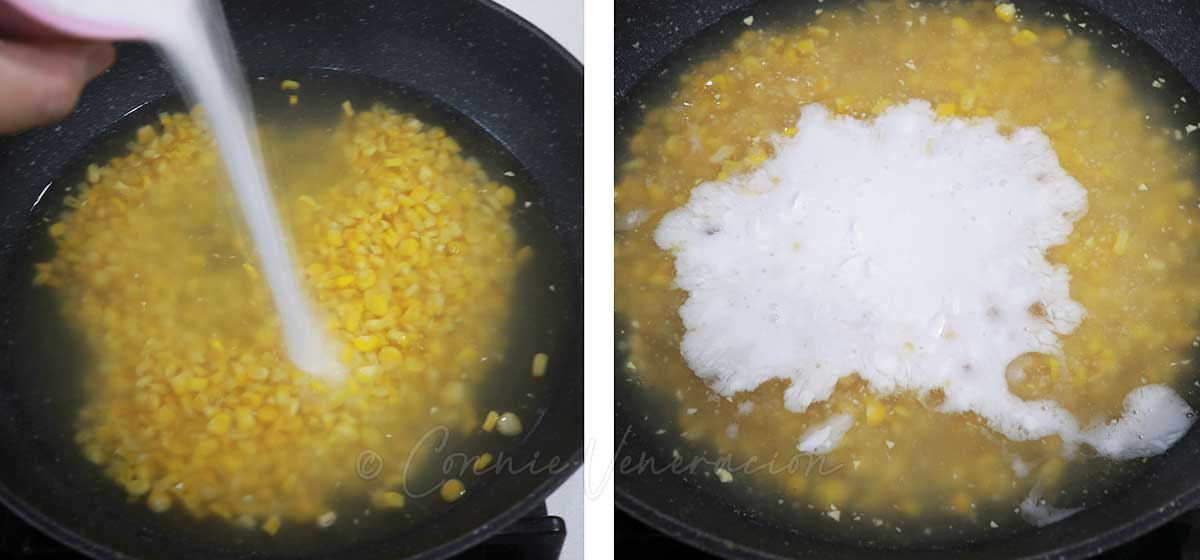
The corn kernels, sugar and salt are poured into the flavored water and cooked until the corn kernels are soft but not too mushy. The tapioca pearls go in next together with the coconut milk. The cooking continues until the mixture is has thickened.
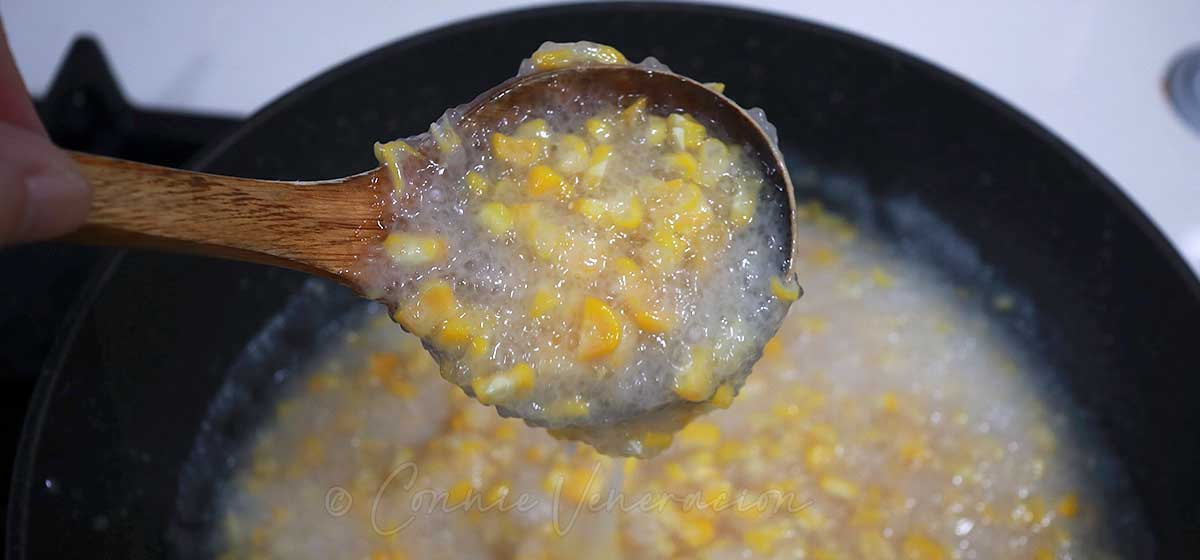
By the end of cooking time, the mixture should be thick but should still fall back into the pot when scooped with a ladle. The tapioca pearls should also be discernible as tiny translucent globes. If you find it too goopy, add more coconut milk and cook until simmering. Note that che bap will thicken some more as it cools. So, if you intend to serve it chilled, you might want the mixture to be a bit soupy when you turn off the heat.
Che bap (Vietnamese sweet corn, tapioca and coconut)
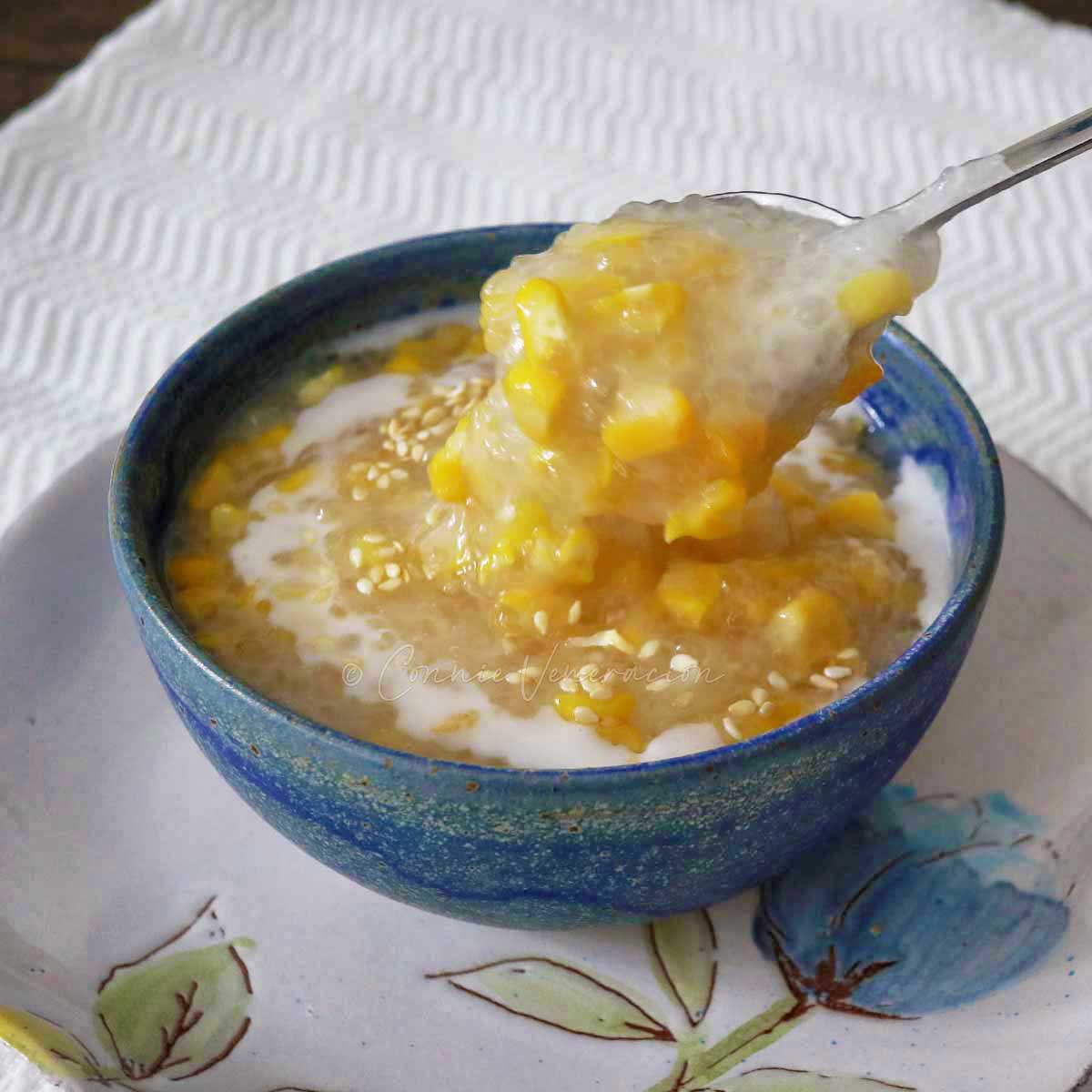
Ingredients
- 2 ears sweet corn
- 1 pandan leaf
- ⅓ cup white sugar
- ¼ teaspoon salt
- ⅓ cup quick-cooking tapioca pearls
- ½ cup coconut milk
- ½ cup coconut cream
- toasted sesame seeds
Instructions
- Using a sharp knife or vegetable peeler, shave the corn kernels and set aside.
- Pour six cups of water into a pot, add the corn cobs and pandan leaf, and boil for ten minutes.
- Remove the corn cobs and pandan leaf, and discard.
- Add the corn kernels to the boiling water.
- Add the sugar and salt, and stir.
- Boil for five to ten minutes then stir in the tapioca pearls and coconut milk.
- Cook, stirring often, until thickened.
- Taste and add more sugar or salt, or both, as needed.
- Ladle the che bap into bowls, drizzle coconut cream on top and sprinkle in toasted sesame seeds.

